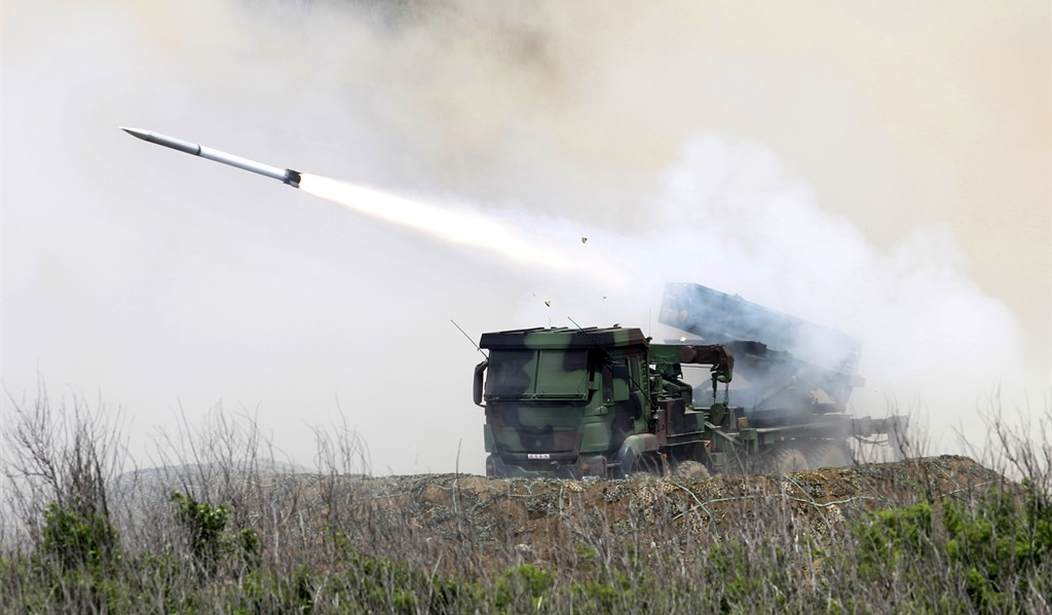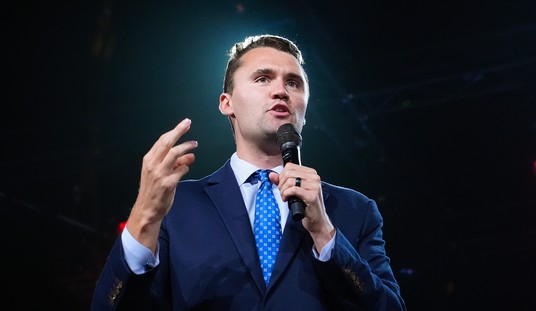Welcome to the third, and probably last, iteration of my coverage of Ukraine's punitive expedition into Russia's Kursk Oblast. The level of Kursk-specific activity seems to be winding down, and I will blend it into my weekly (or thereabouts) Putin's War collection.
The Ukrainian advance seems to have run out of steam despite the absence of a coherent Russian defense. This is not unusual, because fighters will usually outpace the logisticians. Patton's ramble through France was brought up short by a lack of gasoline and ammunition, not by the Wehrmacht or the Westwall. In Clay Blair's epic telling of the Korean War, The Forgotten War, he notes that by Spring 1951, Allied forces had figured out that a Chinese offensive ran out of supplies in a maximum of two weeks and built their operational plans around that certainty. The Ukrainian Army is not designed for offensive operations away from its lines of communication. I'll have more to say about that later.
The previous Kursk updates are at Putin's War, Week 128. Russia Invaded, Week 1. The State of Play, and Russia Invaded, Week 2. State of Play.
CURRENT SITUATION
#Ukraine: Today's news from #UkraineWar: 1. UA says its forces have advanced another 2km in #Kursk region, capturing 5sqkm. UA also reported to be pressing W south of Seym River, where they continue to strike RU pontoons. THREAD https://t.co/SJpN0A3qEz ( Map: @ChuckPfarrer) pic.twitter.com/wMXYLWg8Gz
— Peter Clifford Online (@PeterClifford1) August 30, 2024
The hotspot is the pocket of Russian troops caught between Ukrainian troops and the Seym River (left side of the map). This map says there are 1,000 troops stranded there, but that is the low-range estimate. There may be as many as 3,000 in that pocket. All the bridges across the Seym have been knocked out, and the pontoon bridges have been destroyed as fast as the Russians can construct them. Drawing pockets on a map is much easier than creating them on the ground. With good leadership, most of those troops should be able to retreat across the river, but their heavy equipment, armored vehicles, and artillery will be lost if Ukraine prosecutes this attack.
In addition to small gains, Ukraine withdrew from some areas to shorten its lines. Russian troops continue to dig in, and about 30,000 Russian troops have been pulled out of Occupied Ukraine.
The Russian command has already transferred 30 thousand servicemen from Ukraine to the Kursk direction, said the Commander-in-Chief of the Armed Forces of Ukraine Alexander Syrsky.
According to him, the operation of the Armed Forces of Ukraine in the Kursk region was able to distract a significant number of the Russian military from other sectors of the front, the number of redeployed Russian troops continues to grow. At the same time, Syrsky noted that we are not talking about Pokrovsk, but about other directions. Near Pokrovsk, the RF Armed Forces, on the contrary, are strengthening their positions, according to the Commander-in-Chief of the Armed Forces of Ukraine.
Just a short note here. Since this operation began, I've said that inevitably, Russia would be forced to pull troops out of combat in Occupied Ukraine and transfer them to Kursk. The online Rusbots persisted in claiming that Russia had more than enough troops to do that without weakening their lines elsewhere. SPOILER ALERT: They don't, and I'll have more on that subject in my Putin's War update.
Russia is pulling some of its mercenaries out of Africa and moving them to Kursk.
Russian mercenaries from Bears Brigade are being redeployed from Burkina Faso three months after arriving there to defend the Kursk region of Russia - Le Monde
— Anton Gerashchenko (@Gerashchenko_en) August 30, 2024
Viktor "Jedi" Yermolayev, the commander of the brigade, confirmed the redeployment. He wrote that "all Russian soldiers… pic.twitter.com/c4QE1AD9tE
Now that they've had their asses handed to them by Third World, pre-industrial tribesmen, they are being deployed against a real army (see Russia's Wagner Group Suffers Major Defeat at the Hands of Tuareg Rebels in Mali). That's probably not going to end well.
OBJECTIVES
As time passes, we may not know more about what Ukraine intends to do, but we know with increasing clarity what they don't intend to do. The theory that this was some sort of a smash-and-grab raid has been discredited. It looks like the Ukrainians will advance to the maximum extent prudence dictates, dig in, and hold on.
For the record, Colonel Mike Ford has weighed in on this subject via text.
I think there may be some validity to this argument, though I still see this operation as designed to bleed off Russian combat power and split their lines of communication while enticing Russian conscripts into attacks on prepared positions.GEN Jack Keene was in Fox this AM....stated that Ukraine is now occupying as much/more of Russia than Russia does Ukraine.
He then brought up "bargaining chip"
This is where you declare (in an awestruck voice) "WOW Colonel Ford, your strategic genius puts Sun Tsu to shame!"
Bwahahahah!!!!!
The other great unknown is what Russia intends to do.
Putin discussed the "situation" in Kursk region with Gerasimov.
— Anton Gerashchenko (@Gerashchenko_en) August 24, 2024
The Kremlin published this weird video: it has no sound and all the papers are blurred.
Now lip-readers are needed? Can anyone make out their words? pic.twitter.com/hczK6Nae4a
The Russian reaction so far seems to have been a reluctance to react. There was probably a feeling that this incursion was just like the small-scale penetrations into Belgorod Oblast, particularly because the Russians hadn't received any backchannel warning from Jake Sullivan's National Security Council. When the scope became more apparent, some reaction was necessary, but the Russians were unwilling to commit the troops it would have taken to stop the Ukrainians because that would mean an end to their offensive in Donetsk. Finally, the political pressure to do something has kicked in, and we see 30,000 troops heading there. One is reminded of the early days of World War I when the Germans sent a cavalry division slated to invade France to reinforce the Eastern Front. It arrived a few days after the slaughter at Tanneberg and the First Battle of the Masurian Lakes. The General Staff ordered the division back on the trains and returned it to France, where it arrived a few days after the First Battle of the Marne. These 30,000 troops could reach Kursk just in time to be recalled back to Zaporizhzhia or Kherson.
COMBAT OPERATIONS
Ukrainian mechanized forces during combat inside a settlement in Kursk Oblast of Russia.
— Status-6 (Military & Conflict News) (@Archer83Able) August 26, 2024
At one point (3:33), Ukrainian tank is hit in the rear by a Russian ZALA Lancet loitering munition, which causes its anti-drone netting located on turret to fold. The tank itself continues… pic.twitter.com/TNJM5NQaWX
In a two-hour operation, Russian forces attempted to counterattack the Ukrainian 225th Assault Battalion's positions using small, stealthy assault groups with minimal vehicle support.
— WarTranslated (Dmitri) (@wartranslated) August 28, 2024
The battalion effectively countered this tactic by employing drones for continuous… pic.twitter.com/zfx1WqJZqc
At least part of the Ukrainian concept of operations seems to involve running armed reconnaissance missions down Russian lines of communication to attrit incoming reinforcements.
Ukrainian FPV drones continue to prowl the key Russian supply route on the E38 highway in Kursk Oblast.
— OSINTtechnical (@Osinttechnical) August 27, 2024
Seen here, a Russian van burns on the E38 highway bridge in Rylsk after a successful Ukrainian drone strike. pic.twitter.com/ukbqIohd8V
The hotspot is the pocket of Russian troops caught between Ukrainian troops and the Seym River. This map says there are 1,000 troops stranded there, but that is the low-range estimate. There may be as many as 3,000 in that pocket. All of the bridges across the Seym have been knocked out, and the pontoon bridges have been destroyed as fast as the Russians can construct them. Drawing pockets on a map is much easier than creating them on the ground. With good leadership, most of those troops should be able to retreat across the river, but their heavy equipment, armored vehicles, and artillery will be lost if Ukraine prosecutes this attack.
#Ukraine: Today's news from #UkraineWar: 1. UA says its forces have advanced another 2km in #Kursk region, capturing 5sqkm. UA also reported to be pressing W south of Seym River, where they continue to strike RU pontoons. THREAD https://t.co/SJpN0A3qEz ( Map: @ChuckPfarrer) pic.twitter.com/wMXYLWg8Gz
— Peter Clifford Online (@PeterClifford1) August 30, 2024
OUTLOOK
I think the battle in Kursk is about to slide into stasis. I don't think the Ukrainians will invest more resources in this theater because it has served its purpose of requiring the Russians to react. I would anticipate that new Ukrainian formations coming out of the NATO training grounds will begin relieving the units that led the assault on Kursk. Those units will go into reserve to receive replacements and new equipment.
If the Russians were going to go all hands on deck to "liberate" the area of Kursk Ukraine occupies, it would have done so by now.
I have doubts that the Seym River pocket will become a real thing. It will take too many troops and too many casualties to roll that area up. The path of least resistance is incremental advances behind an incremental withdrawal of Russian forces and attrit those forces attempting to withdraw.
The impact of the Russian withdrawal is already felt in Kharkiv and Zaporizhzhia, where Ukraine is making small gains against a weakened Russian line.
An alternative view would be that Ukraine has outrun its fuel and ammunition and will resume fighting in earnest when resupplied. Should that be the case, I still would not expect to see the Seyn River pocket reduced, but I would expect a push to the east to try to get into the rear areas supporting Russian operations in Kharkiv and Donbas.













Join the conversation as a VIP Member